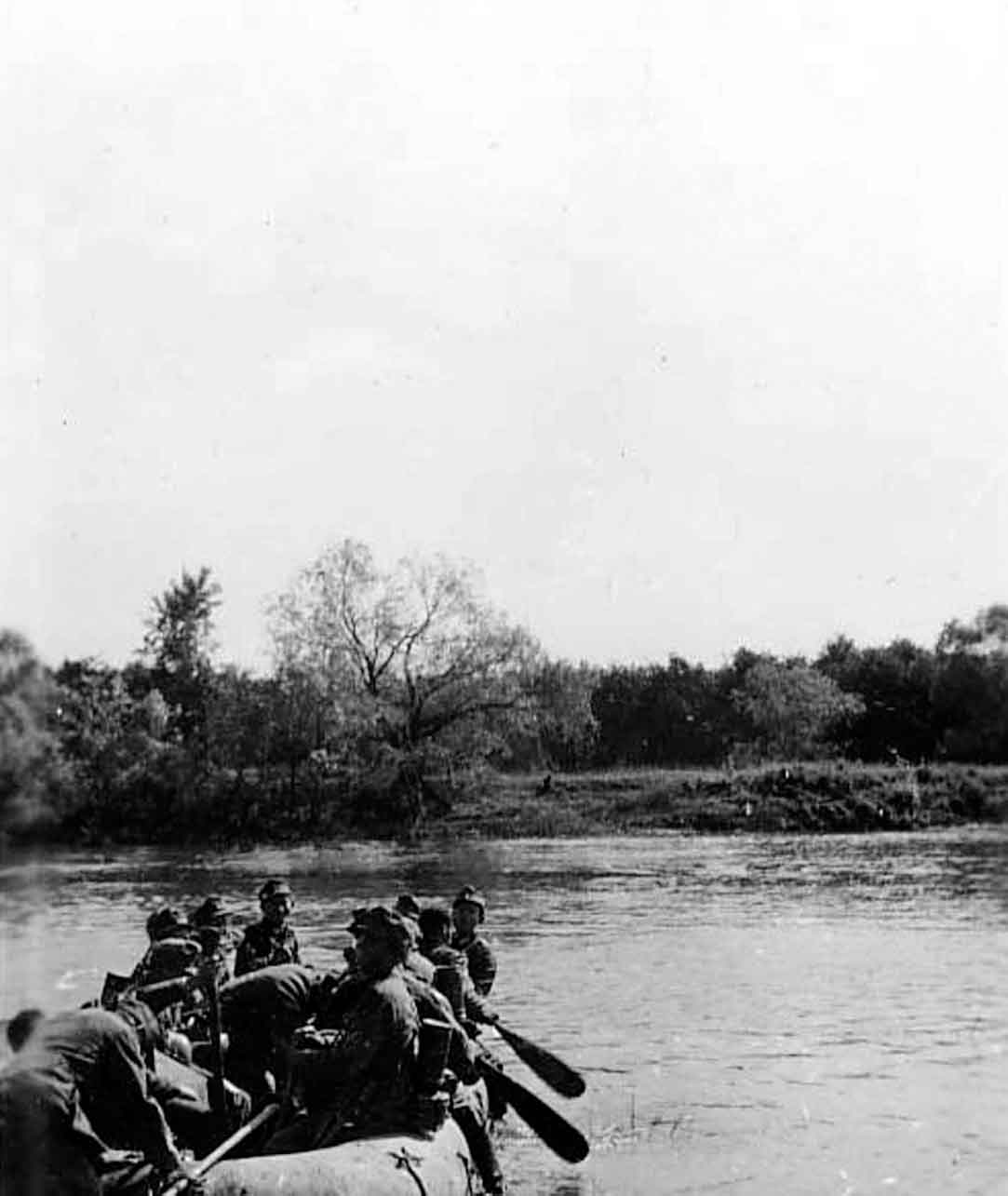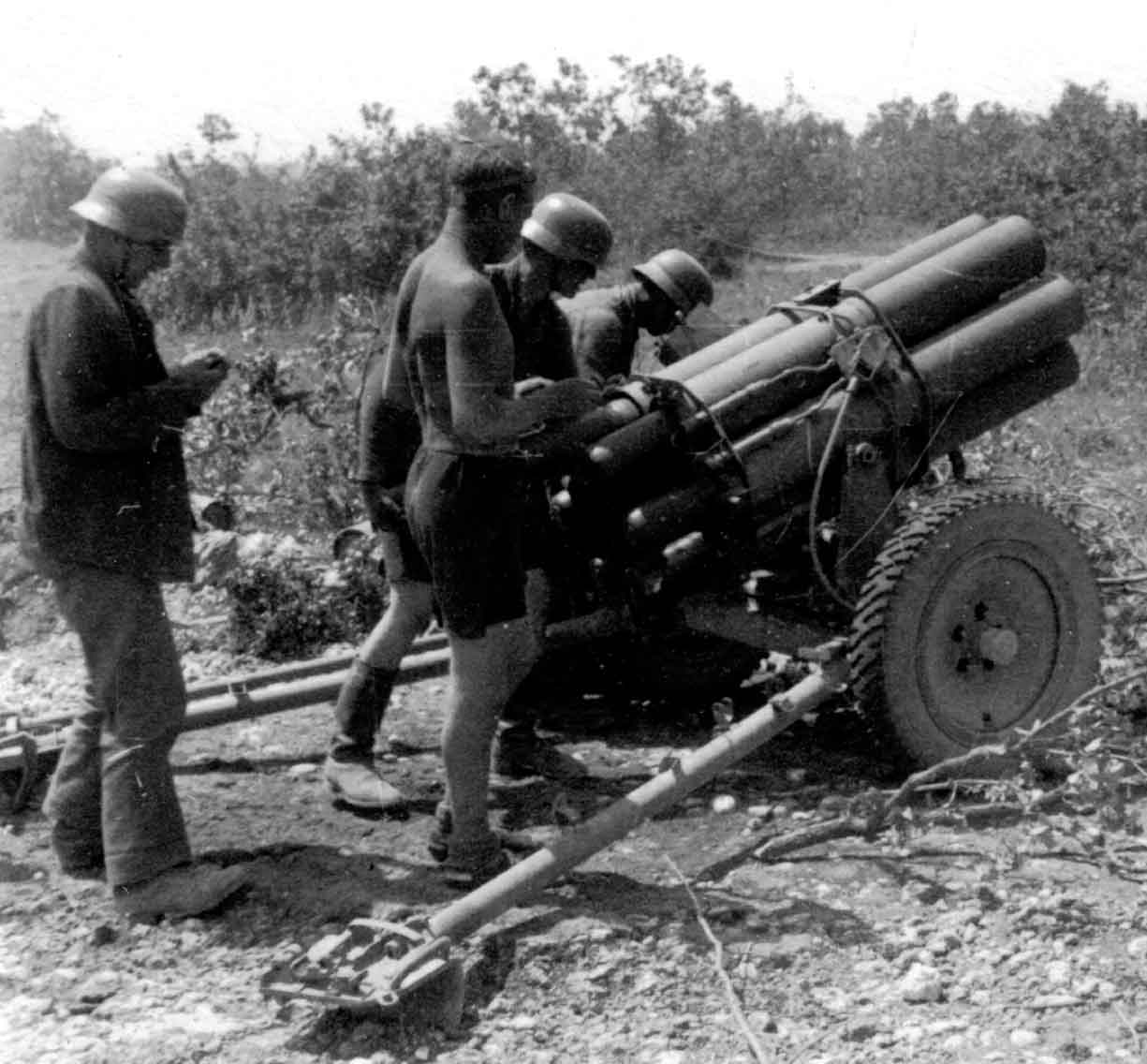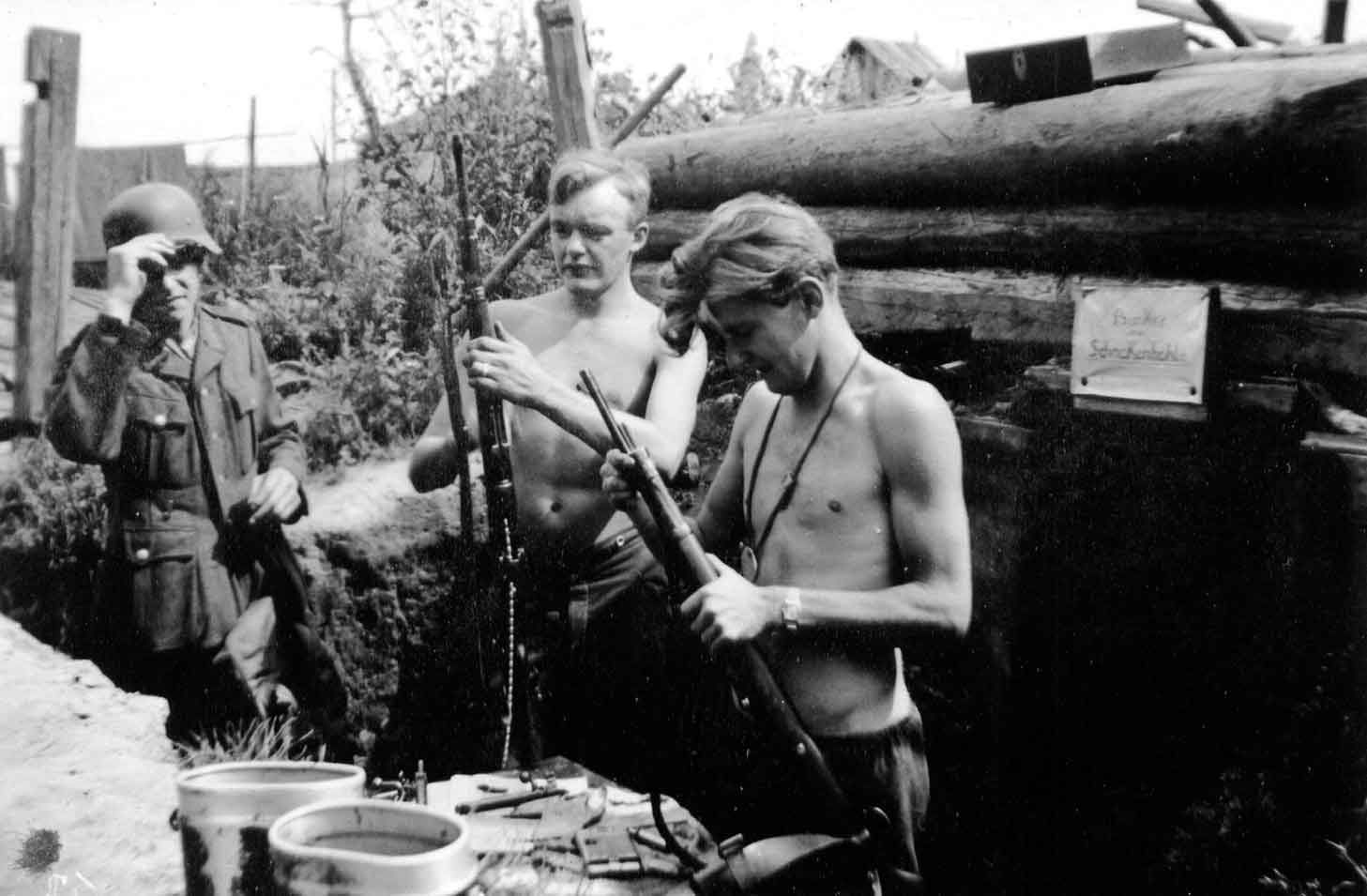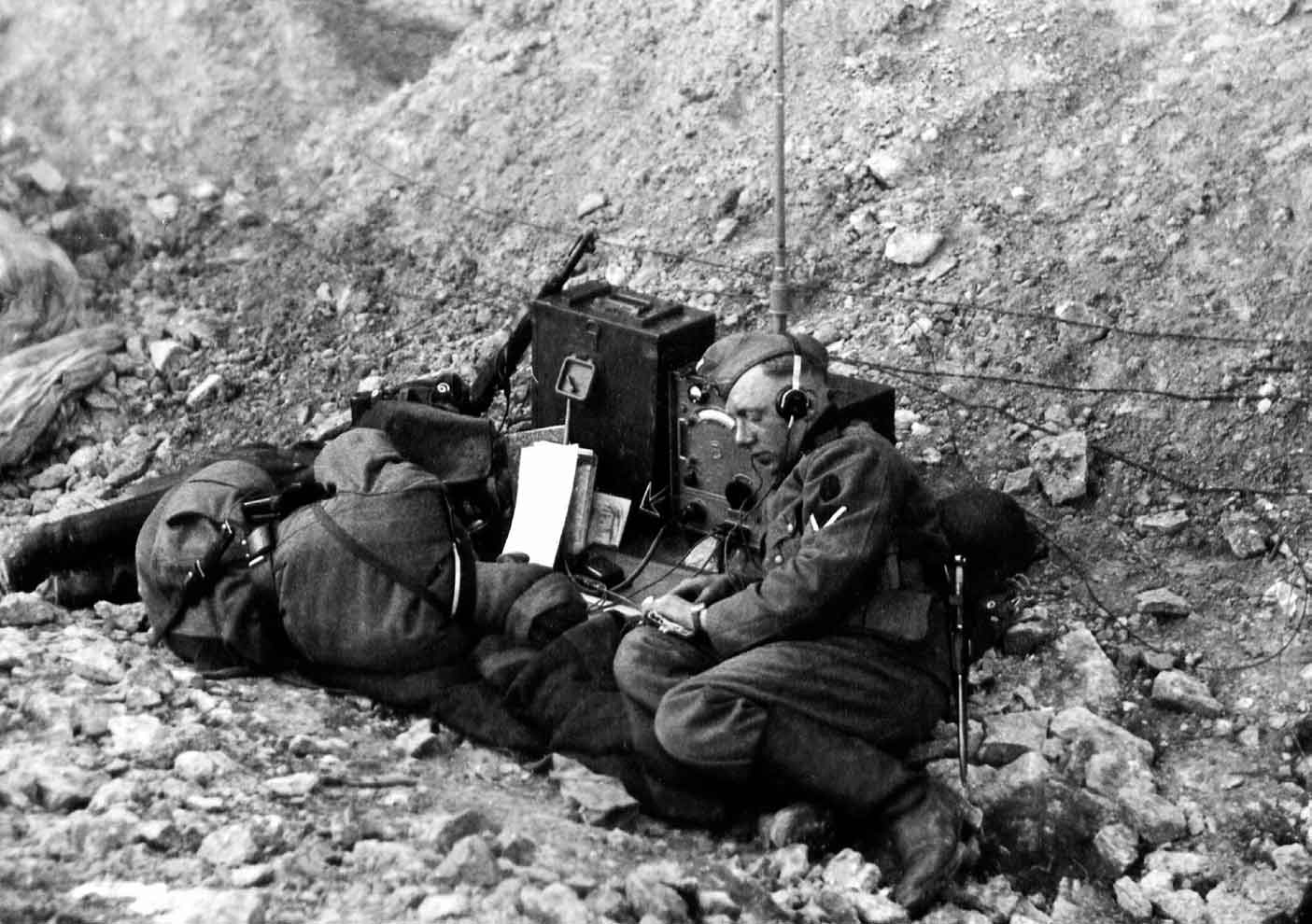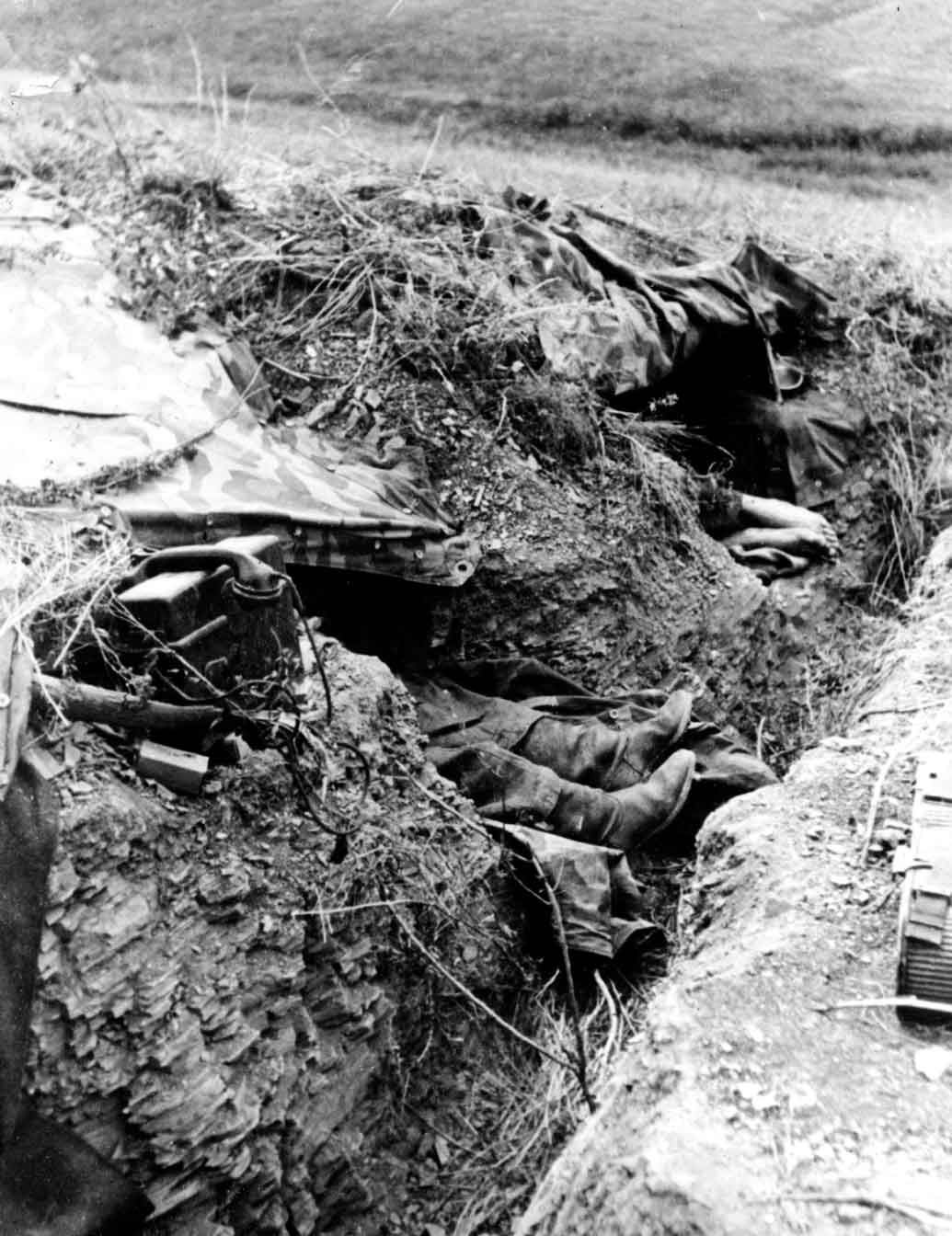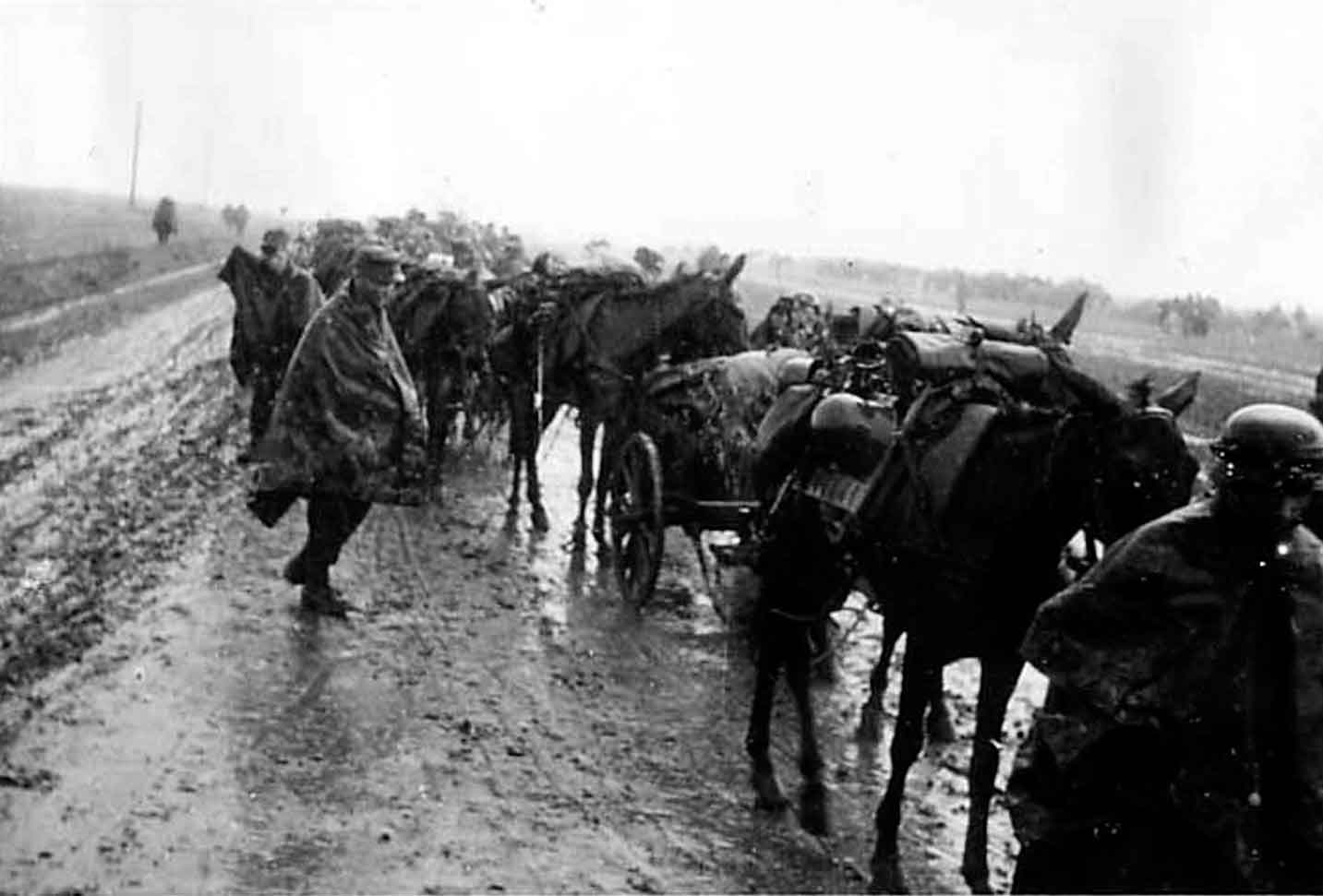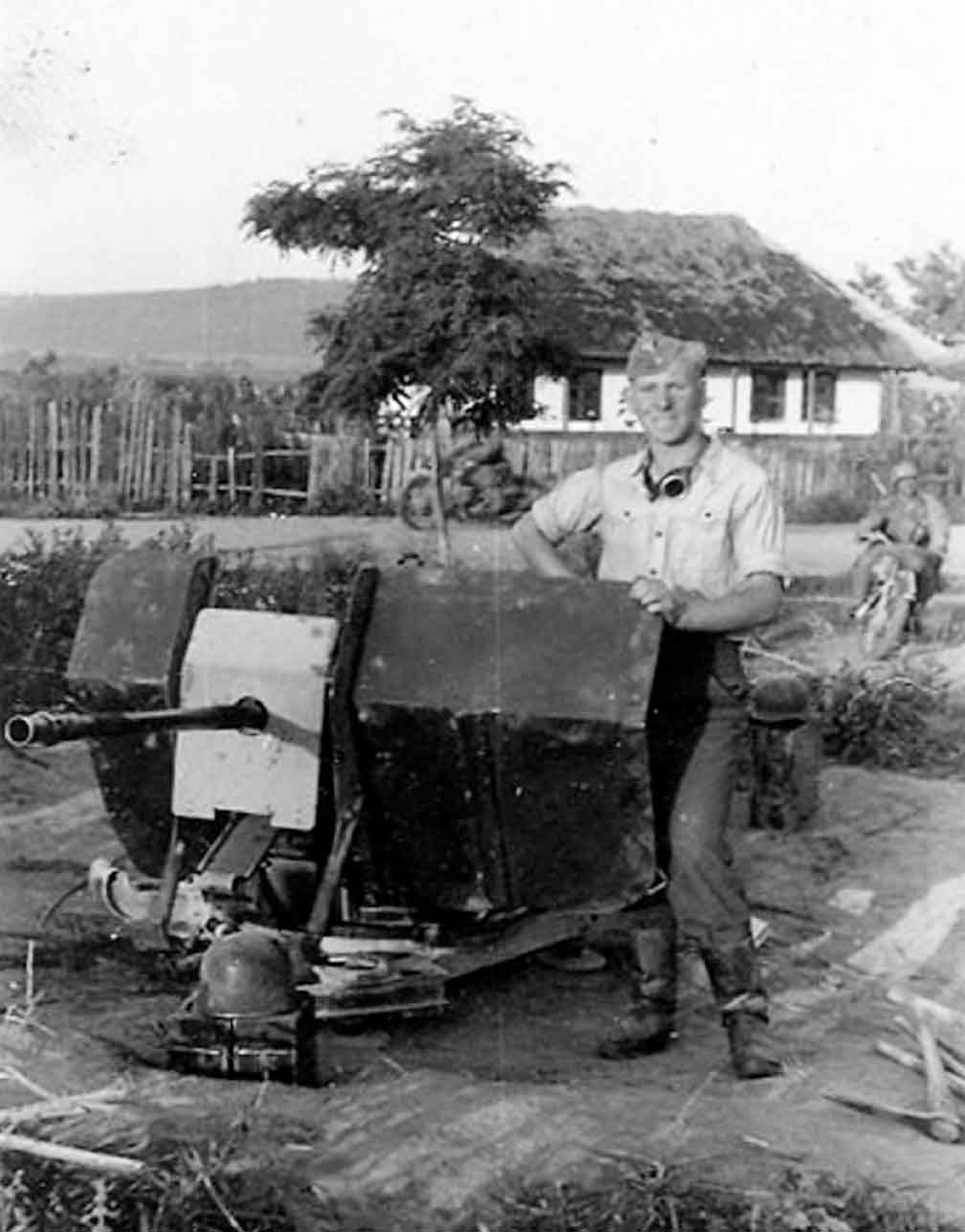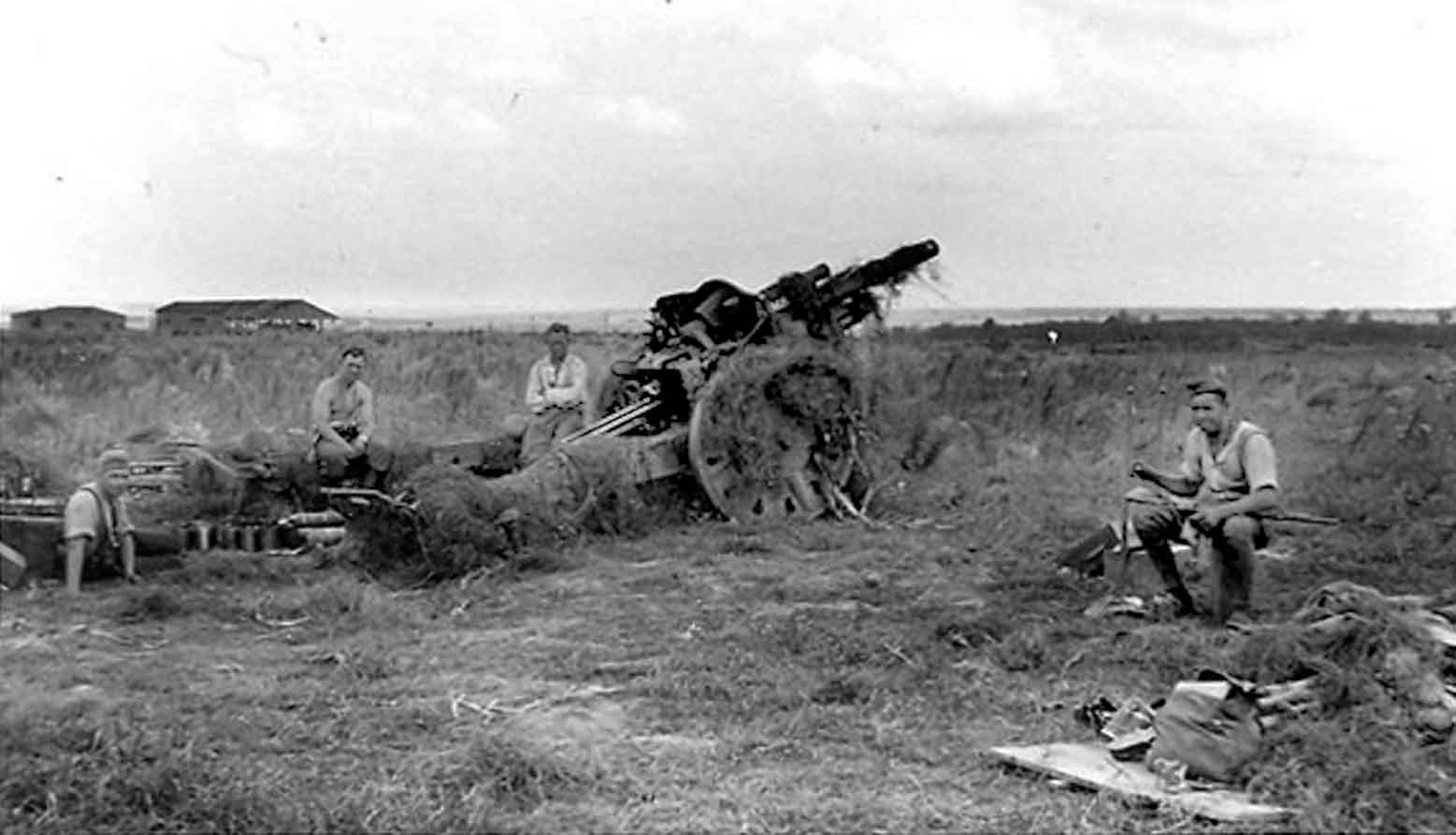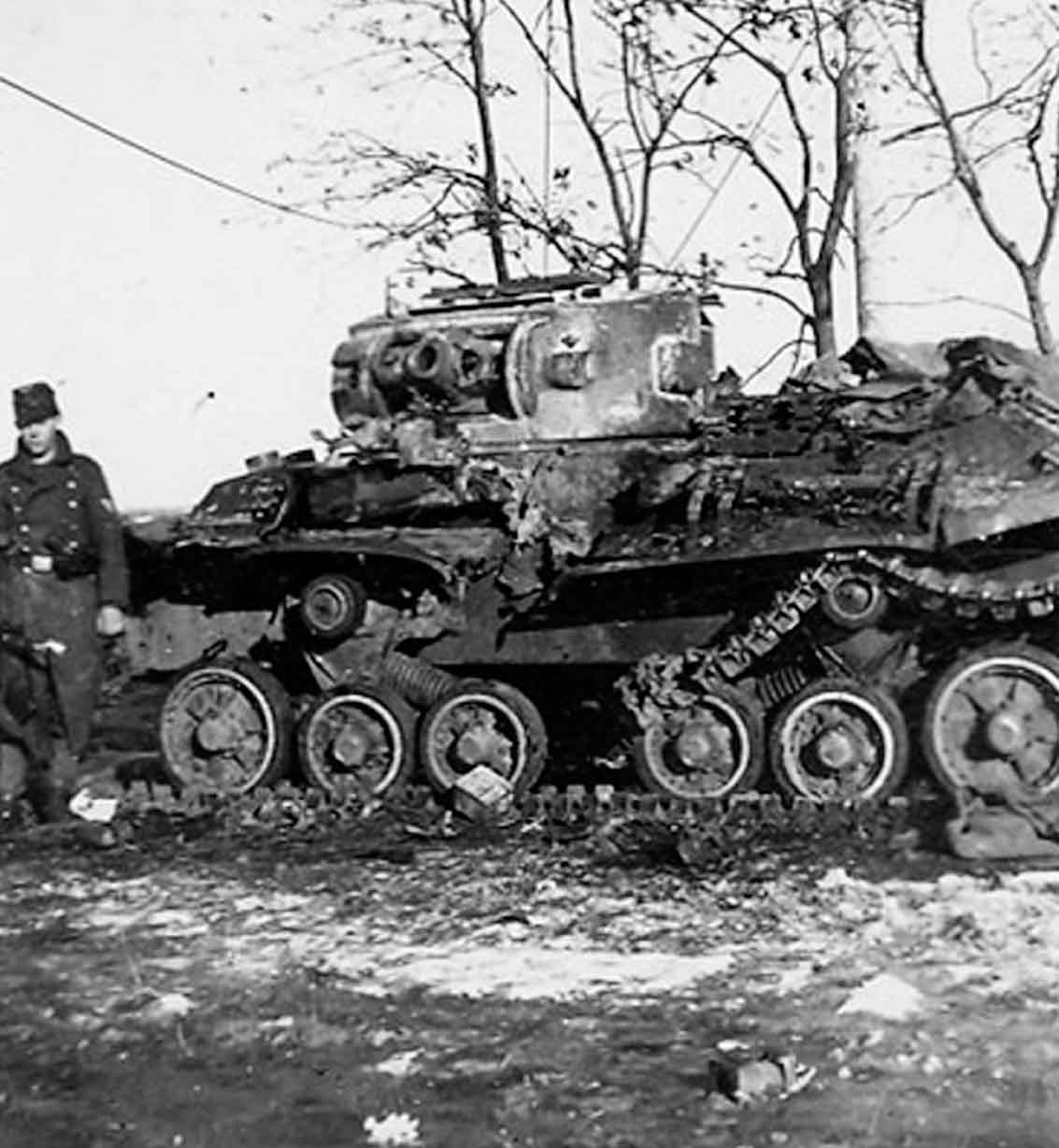Battle of Attrition
FROM RETREAT TO DEFEAT
PART I: WINTER 1944/45–MAY 1945
By May 1944 the Army Group had been ground down through a battle of attrition and as a consequence could no longer sustain itself cohesively on the battlefield. For months the German Army had fought desperately to maintain unity and hold its positions, at the cost of thousands of lives. It now not only lacked weapons and equipment but suffered serious shortages of manpower. The heavy drain of powerful Panzer units and other elite forces to the Western Front and north Ukraine had left the centre of the German Eastern Front very weak, without proper armour and aircraft support. In mid-June 1944 Army Group Centre had thirty-four infantry divisions, two Panzergrenadier divisions, two Luftwaffe field divisions, seven security divisions and just one Panzer division. To the rear were several Hungarian divisions, but these troops were badly under strength and unable to support the main German force for any appreciable length of time. In total the German Army had the equivalent of 52 divisions, with some 420,000 troops, and a further 400,000 in support. Although on paper this was considered to be a substantial force, the German infantry divisions during that summer were stretched beyond their limits. The front line which the German soldiers were supposed to defend was immense. Each division was supposed to defend a 12 to 16 mile front, but every mile was on average only protected by sixty frontline infantry, supported by two or three artillery pieces and a handful of assault guns.
To make matters worse, the quality of these soldiers had declined rapidly through the year, due to the enormous casualties. Since 1943 they were steadily replaced with troops of the Volksdeutsche, and ethnic Germans drafted from Eastern Europe. Although this bolstered the frontline German units, generally neither the Volksdeutsche nor the ethnic Germans were strong enough to withstand powerful Red Army assaults. With combat performance far reduced, even the strongest German infantry units were beginning to display low morale.
Defeat seemed imminent and yet the Germans were once again spared from total destruction as the Soviet offensive in the centre petered out. The temporary lull gave the German Army enough time to build a number of defensive positions. In the Belorussian sector, for instance, where the front had been relatively static for some months, the Germans feverishly constructed lines of trenches reinforced with machine gun and mortar pits. There were defensive belts heavily mined, most of them protected by extensive barbed wire barriers and some anti-tank guns.
In spite of the heavily fortified string of defensive lines, the fortifications were still inadequate. They were up against some 1,700,000 Red Army troops and support personnel – more than double the total German force – all preparing to launch a new massive offensive against Army Group Centre.
On the morning of 22 June 1944, three years to the day since the German Army had begun its campaign on the Eastern Front, the Russians finally unleashed their long-awaited offensive. The codename was ‘Operation Bagration’, and it opened up with a massive artillery bombardment intended to smash German defensive positions and annihilate Army Group Centre. The Russian 1st Baltic and 3rd Belorussian Fronts attacked northwest and southeast of the city of Vitebsk. The 3rd Panzer Army was taken completely by surprise. During the course of the day as the German defence lines began to crack under the mighty hammer blows of Russian artillery and attacking armour, the 3rd Panzer Army fought a desperate battle of attrition. The next day the Russians tore through the 3rd Panzer Army and closed its mighty jaws around the smouldering city of Vitebsk. On 24 June the 9th Army, still in a state of confusion from the massive Russian attack, was penetrated by the 1st Belorussian Front near the Beresina. Almost immediately the front begun to collapse under the pressure, leaving many units either encircled or totally annihilated. By the end of the fourth day Army Group Centre had committed all its reserves without stemming or even temporarily halting the Soviet drive. Already five German divisions were encircled and Vitebsk was almost lost. All over the front confusion swept through the German divisions. Other divisions that had not been severely mauled attempted to hold vital lines. The 3rd Panzer Army, for instance, tried desperately to cling to the Dvina and Ulla Rivers fifty miles west of Vitebsk, but could only hold out for a short time. As for the 9th Army, its troops were enduring some of the heaviest ground and aerial attacks that it had ever experienced.
Near Bobruisk the situation was critical. Some 40,000 troops were now trapped inside a pocket measuring about thirteen miles in diameter east of the city. A series of desperate breakouts were undertaken, but the Russian artillery and Air Force together turned it into a slaughter. Even the 12th Panzer Division, which had been hurried from Army Group North, could not help relieve the siege around the city. By 28 June the 9th Army was almost destroyed; 4th Army was in full retreat, and 3rd Panzer Army was penetrated in a number of places and barely able to maintain its forces cohesively.
Nevertheless, Hitler was adamant that his troops hold another line of defence. In less than a week’s fighting the Germans had lost some 70,000 troops killed and captured. Even falling back to another defence line could not prevent the inevitable wholesale destruction of Army Group Centre. By early July most of the Army Group was trapped east of the city of Minsk by advancing Russian columns.
The bitter defensive fighting had cost Army Group Centre twenty-five divisions. The 4th Army had suffered terrible losses with some 130,000 lost out of its original strength of 165,000 men. The 3rd Panzer Army had lost ten divisions. The 9th Army was badly shattered along with remnants of the once-powerful 2nd Army. In total 28 divisions with more than 400,000 men had been captured. The destruction of Army Group Centre was the greatest single defeat of the German Army of the Second World War. It had suffered a defeat far greater than that of the 6th Army at Stalingrad. The successful conclusion of ‘Operation Bagration’ had effectively sealed the coffin of the German Army in the east. What was left of its mangled and exhausted forces limped westward into Poland to begin a reinforcement of the Vistula River line.
As for the Russian Army they were once again victorious. They had covered some 200 miles during the offensive without pause and were now deep in liberated territory.
A six metre inflatable boat has been pressed into service by assault troops. Two paddles either side was normally sufficient for the boats to be propelled through the water, even when carrying a full complement of infantry onboard with heavy weapons and equipment.
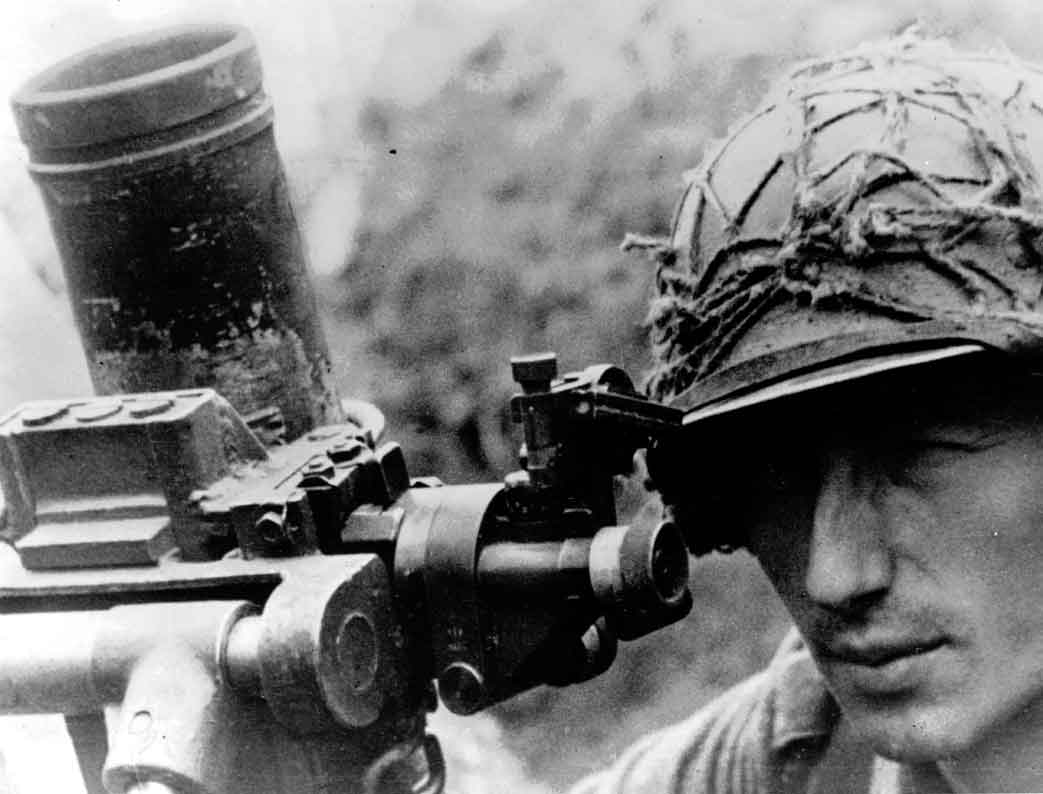
Two photographs showing the 8cm sGrW 34 mortar. One photograph shows the soldier looking through an optical range finder that has been attached to the gun tube. The other photograph shows a mortar trooper next to his weapon prior to a fire mission. It was very common for infantry, especially during intensive long periods of action, to fire their mortar from either trenches or dug-in positions where the mortar crew could also be protected from enemy fire.
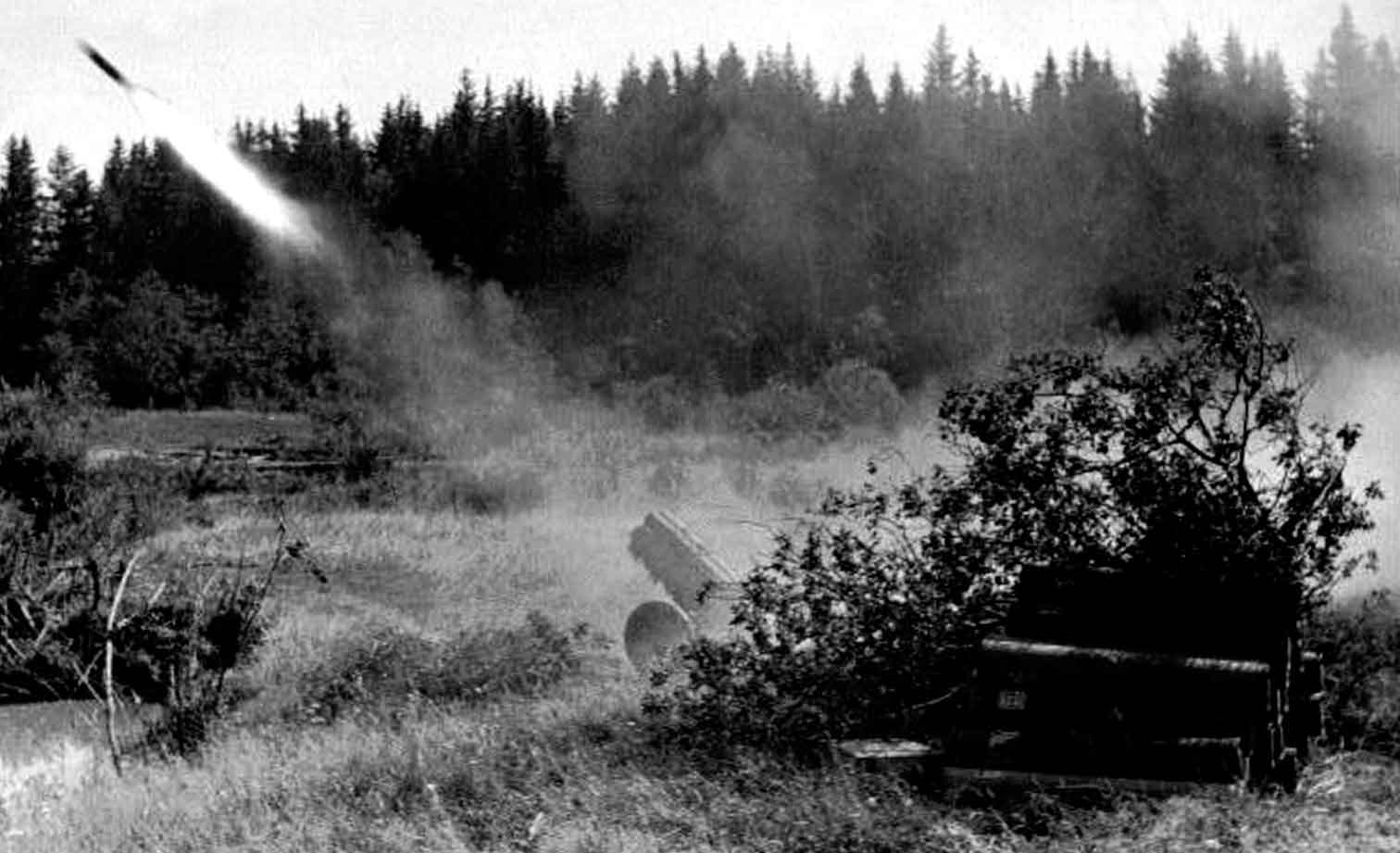
Two photographs showing the lethal Nebelwerfer 41 in a field. The Nebelwerfer 41 was equipped with six barrels, each firing a 34 kg 150 mm Wurfgranate 41 (rocket shell 41) out to a range of approximately 6,800 metres. Along the German front the Nebelwerfer was used extensively and caused high losses in the Russian lines. This deadly weapon fired its shells from a six-tube mounted rocket launcher. When fired the projectiles screamed through the air, which terrified the enemy. These weapons served in independent army rocket launcher battalions, and in regiments and brigades.
A mortar crewman inside a dug-in 8cm sGrW 34 mortar position preparing to look through a pair of 6x30 Zeiss binoculars. Life in the line for these soldiers was a continuous grind, but any let-up in defence would ensure that the Red Army would push deeper into the German defences. German commanders in the field were well aware of the disasters befalling their comrades in the central and southern sectors of the front, and knew that their position on the Eastern Front was becoming more precarious with each passing day.
During a lull in the fighting, a group of troops are preparing some food. Out in the field the troops were issued a march ration of sausage, cheese, dried bread, coffee, and sugar in paper bags. However, during the last months of the war, almost all rations had dried up and many troops had to rely on scavenging for what they could find, either from dead comrades, civilians, or captured stocks.

A troop on the march with a full complement of kit. The vast majority of the travelling done by the infantry was on foot. It was often exhausting for the soldiers, especially when they were compelled to fight before reaching their destination.
Two shirtless soldiers clean their bolt action rifles during a lull in the fighting. On a number of sectors of the front the Wehrmacht managed to contain their Soviet foe and built strong fortified positions. While many of the positions were not strong enough to hold back heavy Russian attacks, they were able to dispel weaker attacks for appreciable lengths of time.
One of the most important forms of defensive action in any battle was communication from the front lines to the command post. Here in this photograph a radio man can be seen with his radio set communicating to one of the many field posts scattered in the rear.
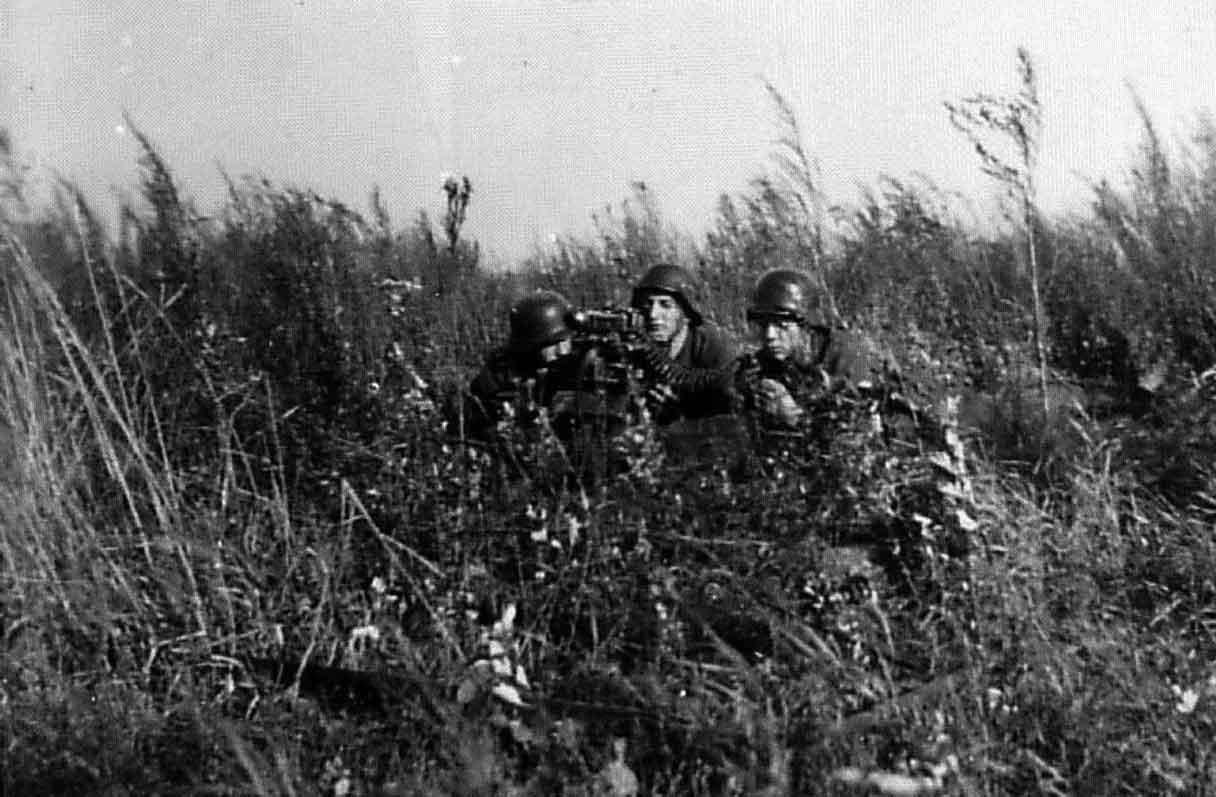
A well concealed heavy MG42 machine gun crew. A typical strongpoint deployed along the German front comprised mainly of light and heavy MG34 and MG42 machine guns, anti-tank rifle company or battalion, a sapper platoon that was equipped with a host of various explosives, infantry guns, anti-tank artillery company which had a number of anti-tank guns, and occasionally a self-propelled gun.
A vehicle can be seen trying to negotiate a small roadway. Behind the vehicle, troops are seen digging trying to widen the road in order to allow more traffic to pass through unhindered.
In a fixed defensive position is a 2cm flak crew. The troops were now courageously battling from one receding front to another. Thousands of these flak guns were used in a desperate attempt to delay the Russian onslaught. However, like so much of the German arsenal employed in the east, they were too few or too dispersed to make any significant impact on the main Soviet operations, which were already capturing or encircling many of the key towns and cities.
One of the many dugout positions that were built along the Eastern Front. This is more than likely a forward observation post. Note the field telephone. Zeltbahn shelter quarters have been improvised to shelter the post from rain and wind. Note both dugouts have troops resting inside and their feet are protruding out.
A gunner can be seen with his 2cm Flakvierling 38 quadruple self-propelled flak gun. In November 1943 the Heer took over responsibility of the Luftwaffe field divisions. It quickly attempted to make drastic improvements in order to help prevent further massive losses and bolster their equipment and manpower so that they could support the army and Waffen-SS without disintegrating on the front lines.

One of the quickest methods of moving men and equipment from one part of the front to another was by rail. Here special flatbed rail cars are seen carrying vehicles and supplies. Note the MG34 machine gun on its tripod complete with barrel and machine gunner sitting on a chair next to his weapon. This gun was used for local defence against the ever increasing enemy aerial attacks.
A posed photograph showing two soldiers; one on the right is armed with the MP38/40 machine gun, and the other with the standard army issue Karbiner 98K bolt action rifle.
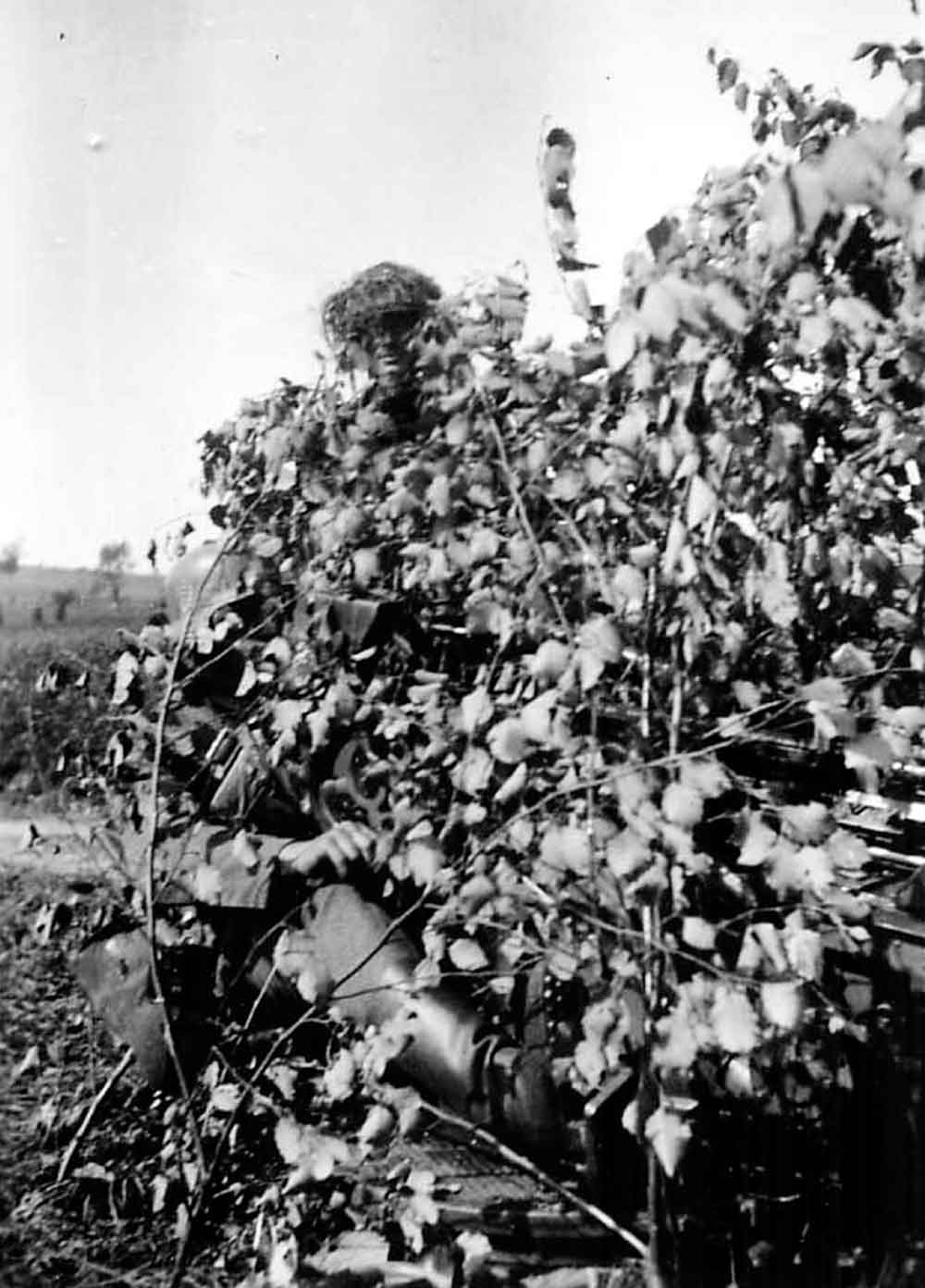
A very well concealed flak gunner with his flak gun out in the field. By 1944 many units were applying increasing amounts of foliage over their weapons in order to help minimise the incredible losses that were being sustained on the battlefield.
Many of the German army divisions, even by 1944, used mainly animal draught. Here in this photograph a long column of horses with soldiers can be seen in the rain. The bulk of the column is pulling supplies.

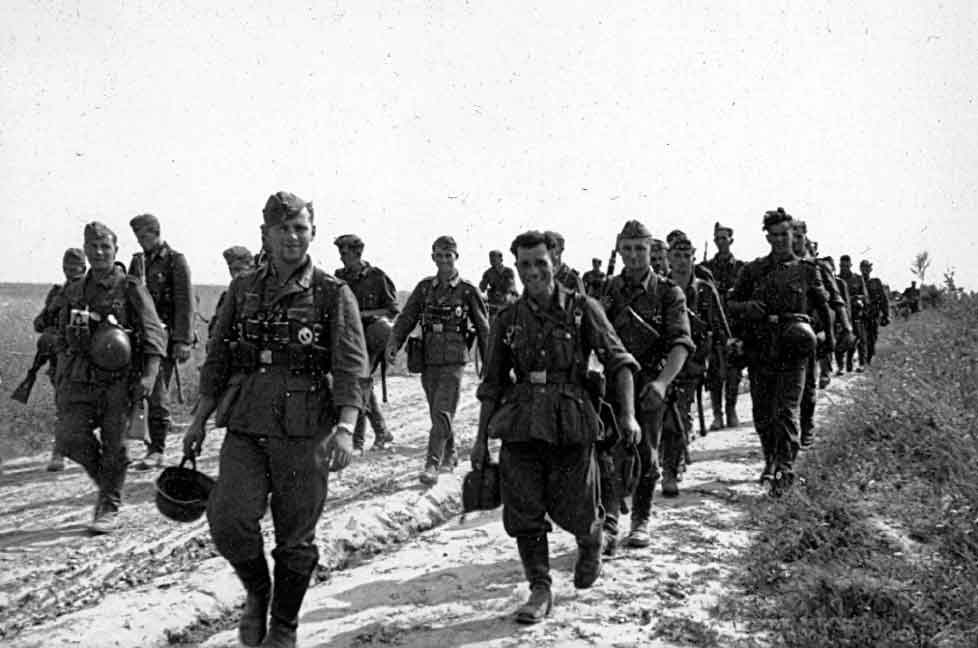
Two photographs showing troops during a march. The distances which the soldiers had to travel were immense. The fear of being constantly attacked by air caused many columns to move during the night.
A 2cm flak position in southern Russia. Although these light antiaircraft guns were used extensively to deal with the threat of the Soviet Air Force, the recurring appearance of heavier enemy armour compelled many flak crews to divert their attention from the air and support their own infantry and armour on the ground in an anti-tank role.

An artillery observation post and a group of Wehrmacht personnel can be seen at a forward observation post. In the field a commanding officer can be seen looking through a pair of high powered 10x80 flak binoculars attached to a tripod. Behind them is a soldier looking through a 6x30 Sf.14Z Scherefernrohr or scissor binoculars. Each artillery or flak battery had an observation post among the frontline positions.
During a lull in the fighting the crew of a 10.5cm field howitzer can be seen sitting with their weapon. The 10.5cm field howitzer provided the division with a relatively effective mobile base of fire. It was primarily the artillery regiments that were given the task of destroying enemy positions and fortified defences and conducting counter-battery fire prior to an armoured assault.

Troops rest in a field during a lull in the fighting. Although the Germans were poorly matched in terms of equipment, the troops were often hardened veterans who had survived some of the most costly battles in the east, and they fought superbly to hold back the enemy.
German soldiers survey two knocked out T34 tanks.
A German soldier poses in front of a knocked out Soviet tank in the early winter of 1944.

A machine gunner armed with an MP38/40 machine gun. Next to him on its bipod is an MG34 machine gun.
A halftrack negotiates across a waterlogged field. A sudden downpour of rain could often turn roads and surrounding fields into boggy mires of mud and water, often making it virtually impossible for wheeled vehicles or animal draught to move through.

A motorcycle combination utilising animal draught to help it along a muddy road. Note how emaciated the horse appears. It is probable that the horse has been taken from a local Russian farmstead and used by the Army. The high use of animal draught in the German divisions, coupled with the massive losses of horses due to sickness, fatigue and being killed in battle, resulted in many thousands being taken from farms and the local population.
Here a Volkswagen Kubelwagen 82 has been transported from one side of a river to another, and its crew are preparing to move it up the embankment.
